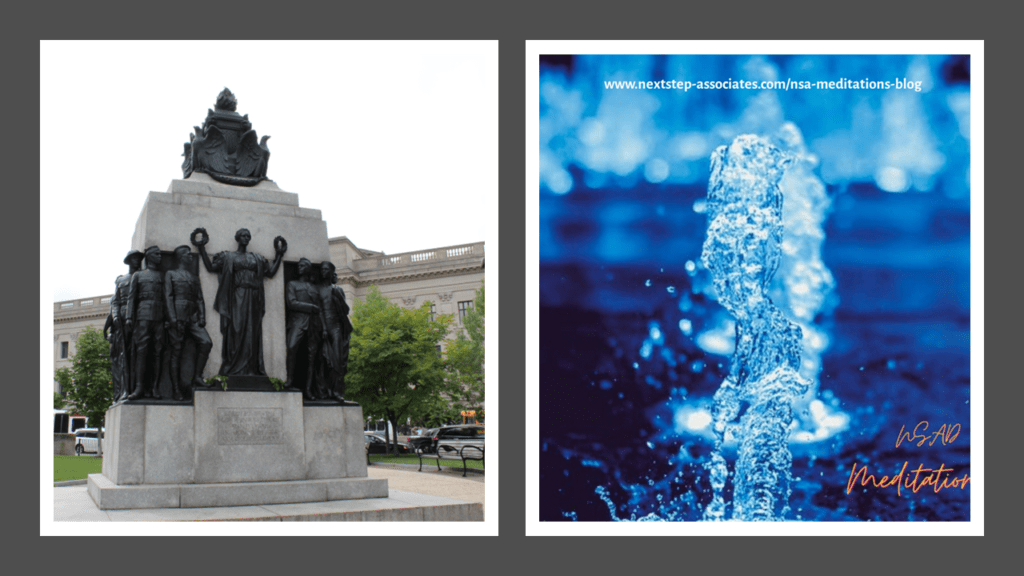The second decade of the twentieth century launched a time of phenomenal change in the United States. World War I had shattered the idealism of the younger generation, and they fled what they deemed was the confinement of the small towns and agriculture to embrace the fast-paced decadence and instant success fantasies awaiting them in the metropolitan areas. F. Scott Fitzgerald’s The Great Gatsby portrays the rhythm and mindset of the times in the cities in the first quarter of the twentieth century. This era also captured the hearts and wills of African Americans who generated their own excitement about the big cities and their hope for being the guardians of their lives. Black people became aware of their capabilities in the visual arts, music, education, politics, philosophy; they felt the pulse of their being. Langston Hughes, a poet, novelist, and playwright was a key leader in shaping the artistic contributions of the Harlem Renaissance; he captured the soul of the African American in his famous poem, There is a River. Zora Neale Hurston, groundbreaking writer and anthropologist, was another important leader in the Black Renaissance movement.
In this national setting in 1925, the Honorable Samuel Beecher Hart, a Pennsylvania legislator from Philadelphia, proposed a memorial for the African American military men who had served in the armed services from the Revolutionary War to World War I. His first submission did not pass, but in 1927, the resubmission succeeded, and funds were appropriated to construct “a lasting record of their (Black soldiers) devotion to duty.” J. Otto Schweizer was the winner over 11 other sculptors who participated in a design competition for the memorial project. The governor appointed a commission of five commissioners (all Black) to oversee the project.
Five years passed before a site was determined for the All Wars Memorial to Colored Soldiers and Sailors. Originally, the site was to be the Benjamin Franklin Parkway in Philadelphia; the Parkway had already been designated as the area for war memorials. Racism precluded this area and another recommendation of Fitler Square at 23rd and Pine Streets from being the location. Finally, agreement was reached that the memorial would be placed in west Fairmount Park behind Memorial Hall (Now the Please Touch Museum) which had been constructed as part of the 1876 Centennial Exposition. On July 7, 1934, the Honorable Hart gave the keynote address at the dedication of the All Wars Memorial to Colored Soldiers and Sailors and his 11-year-old granddaughter, Doris, and five other children of the same age pulled the cords which unveiled the sculpture. Though ceremonies would continue to be held at the site, it was not readily accessible. Many proposals were made to change the location, but the acquisition of funds was always a challenge.
In 1994, 60 years later, the Art Commission of Philadelphia recommended the relocation of the memorial to the originally proposed site, the Benjamin Franklin Parkway. Then mayor of the city, the Honorable Edward Rendell endorsed the site recommendation, and City Council appropriated $200,000 to restore the monument and move it to its present setting in Logan Circle at 20th Street across the street from the Franklin Institute. The monument was rededicated on Veterans Day, November 11, 1994. Representative Hart’s granddaughter, Doris Jones Holliday, who was one of the 6 children who removed the veil from the monument at its first site, pulled the cord to remove the veil at its permanent site.
Reflections
Details of the Memorial
The sculptor was J. Otto Schweizer (1863-1953) a Swiss-American sculptor who gained fame for his work on memorials.
Memorial location: Logan Circle at 20th Street across from the Franklin Institute in Philadelphia, PA
Measurements: a little over 21 feet in height; the base is 17 feet wide and just over 13 feet deep
Materials: granite; figures made of bronze (each figure is 6 feet tall)
Bronze Figures: the face of each figure is that of a man known by the sculptor, J. Otto Schweizer military figures dressed in World War I uniforms
Front: Caucasian female figure of Justice holds two laurel wreaths representing Honor and Reward; her face is that of the sculptor’s wife on her right – two soldiers and one sailor; on her left – three soldiers
Rear: four Caucasian female figures- represent War, Liberty. Peace, Plenty
Top: four American eagles, guardians of The Torch of Life
Bronze Dedication at rear reads:
To commemorate the Heroism and Sacrifice of All Colored Soldiers who served in the Various Wars engaged in by the United States of America that a lasting Record Shall Be Made of Their Unselfish Devotion to Duty. As an Inspiration to Future Generations this monument is Dedicated. May 30, 1934.
Dorothy Watson Tatem, D.Min., ACC
Senior Associate
Next Step Associates, LLC
Cassandra W. Jones, Ed.D.
CEO & President


